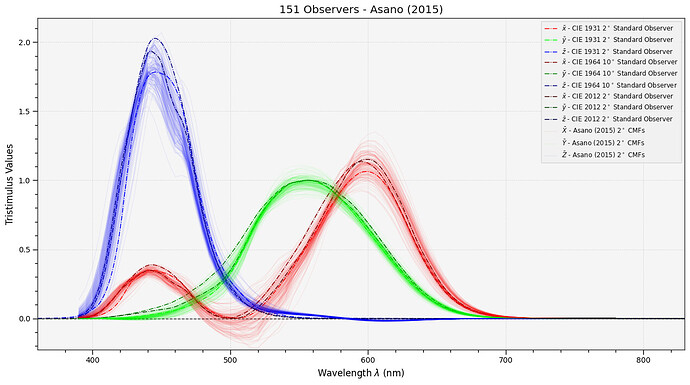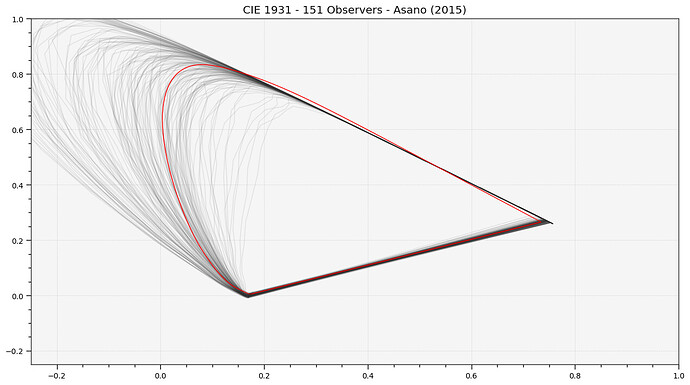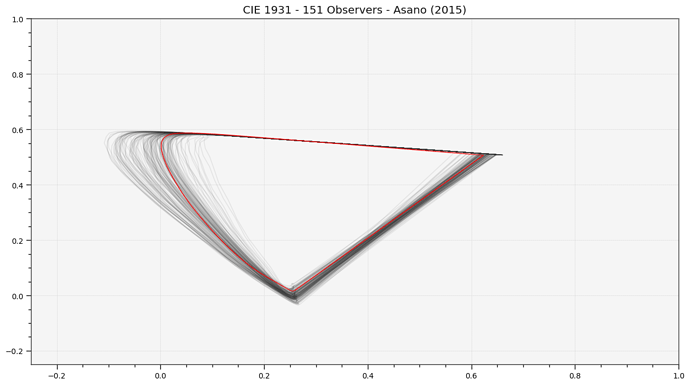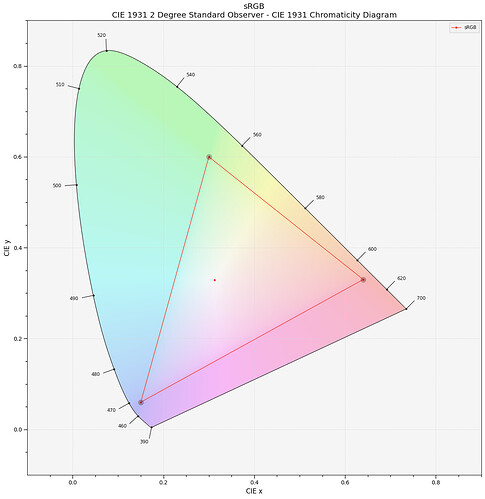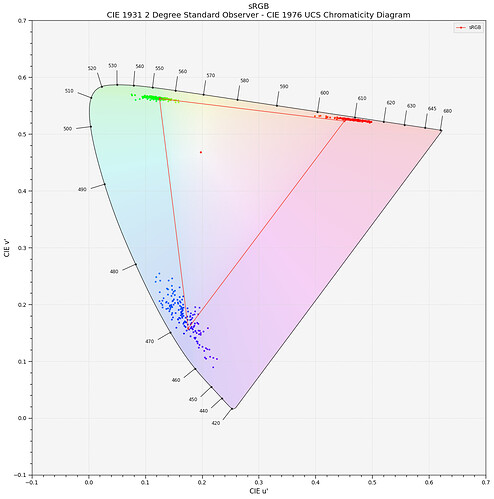Observer Metamerism
That really deserves a dedicated section in Cinematic Color 2
Context
Displays with different primaries are known to introduce perceived colour mismatch between colour stimuli that are computationally metameric for the CIE 1931 Standard Observer. They produce variations of the perceived colour difference of metameric colour stimuli among observers.
How bad is it?
TLDR: Pretty bad, if your flames are turning from red to yellow or pink and, you are confident that you have a calibrated display chain, have an awesome DRT that handles all the fanciest appearance effects, it could be the cause!
Asano (2015) and Asano and Fairchild (2016) have produced a thorough Observer Function Database.
The 151 Colour Normal Observers provide a good insight into the variability of the HVS:
Worth noting that the 3 Standard Observers are relatively well-bounded by the database, implying that a change for one to another is a lot of trouble for potentially not great benefit, closing the parentheses.
With those CMFS, one can plot chromaticity diagrams:
Simulating Observer Metameric Failure
We can also do some simulations, for example, spectrally simulate the metameric failure of the 151 Colour Normal Observers watching the same ITU-R BT.2020 display.
Given a virtually calibrated laser display with ITU-R BT.2020 primaries and a whitepoint with the chromaticity coordinates of D65, we can produce a metamer to the sRGB primaries, i.e. by spectrally adjusting the R, G, B mixture, we can produce 3 spectral primaries producing the colorimetry of sRGB under the CIE 1931 2 Degree Standard Observer, i.e. the transparent grey dots here showing that the system works:
Now let’s plot the 3 spectral primaries for our 151 Colour Normal Observers:
Keeping in mind that the colours are only for illustration purposes because sRGB cannot encode them, put another way, it would be much worse on a WCG display!
Google Colab notebook is available as usual!
I also did some quick tests isolating the two extremes for red and gamut mapped them to sRGB using a mix of clipping and the VWG gamut compression, the pink one is not trivial to map properly but anyway:
An extension would be to test the same observer with sRGB-like phosphors against the ITU-R BT.2020 lasers.
Cheers,
Thomas
